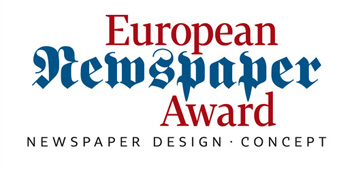Podcasts are awarded in category 18. Different types have developed. At the 21st competition these were among others:
– Daily podcast characterized by one or more presenters. It is always published at a fixed time. Examples are „NRC Vandaag“ from NRC Handelsblad or „Rheinpegel“ from Rheinische Post.
– Podcasts that are characterized by a single speaker. Example „Hollitzer trifft“ of the Thüringer Allgemeine.
– Podcasts on specific topics. Examples: In the series „Dunkle Spuren“ the daily newspaper Kurier from Vienna highlights unsolved murder cases. Politiken from Copenhagen deals in a podcast with mentally ill young people in Denmark. Another award-winning project of this newspaper deals with the genocide in Rwanda 25 years ago.
We present here a selection of the award-winning podcasts. For all projects there is a link to the respective website. The comments were made by the jury members Prof. Joachim Blum, media consultant in Germany and Prof. Dr. Martin Zimper from the Zurich University of the Arts ZHdK/Cast.
Professor Dr. Zimper writes as an introduction: „It’s amazing how much well-made audio content was submitted. This concerns sound design, signatures, acoustic packaging and the personalities and voices used. Some podcasts occupy narrow niches and thus become distinctive. Newspapers surprisingly have ‘audio personalities‘ on the editorial staff.“
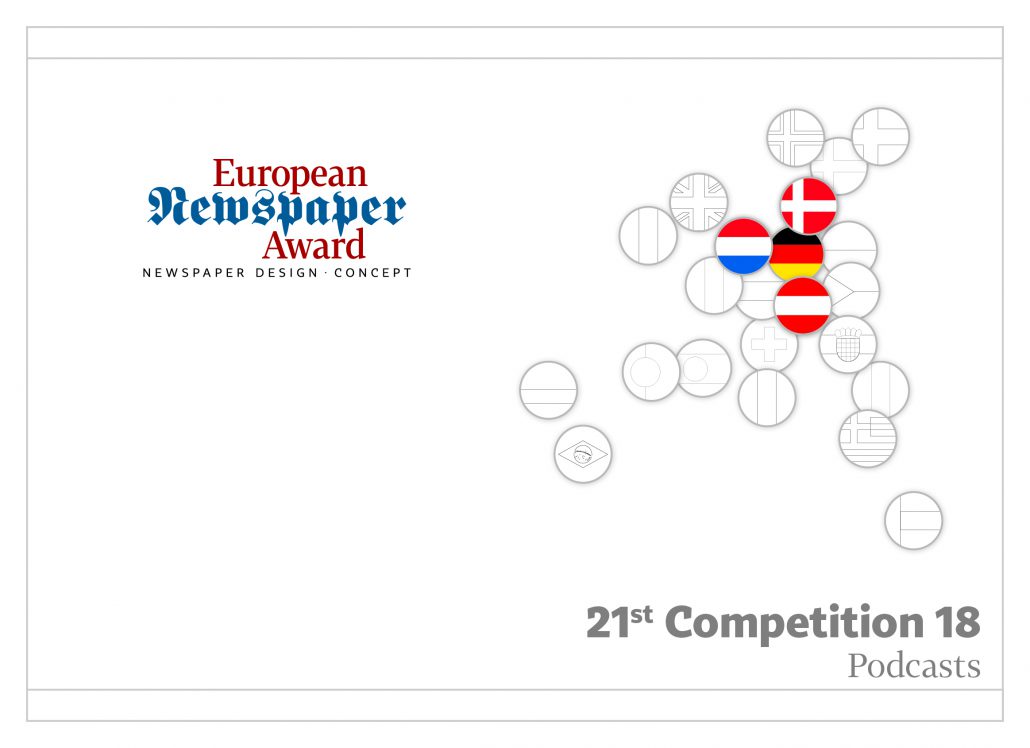
The flags show from which countries the award-winning projects in this category come. We show only a selection here.
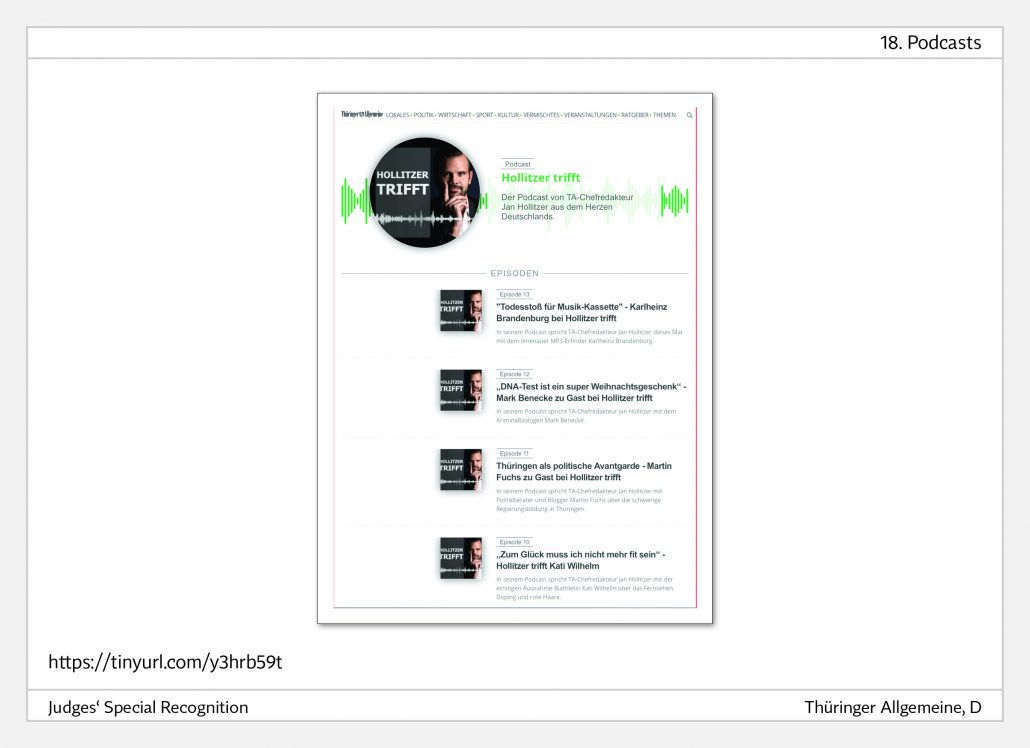
Hollitzer trifft – Hollitzer meets
Prof. Blum: „Interesting podcast with one interview guest each in conversation with Jan Hollitzer, editor-in-chief of the Thüringer Allgmeine, who asks his interview partners cleverly and then lets them talk. Very pleasant and partly very interesting, never boring.“
Prof. Dr. Zimper: „‚Hollitzer trifft – ‚Hollitzer meets‘ – is an example of an audio personality: In terms of content „all of Thuringia“, the TA editor-in-chief strikes the right note in his talk with a personality who is up to date on the day. The format is packed and announced by a female presentation voice.“
Go to the podcast HERE.
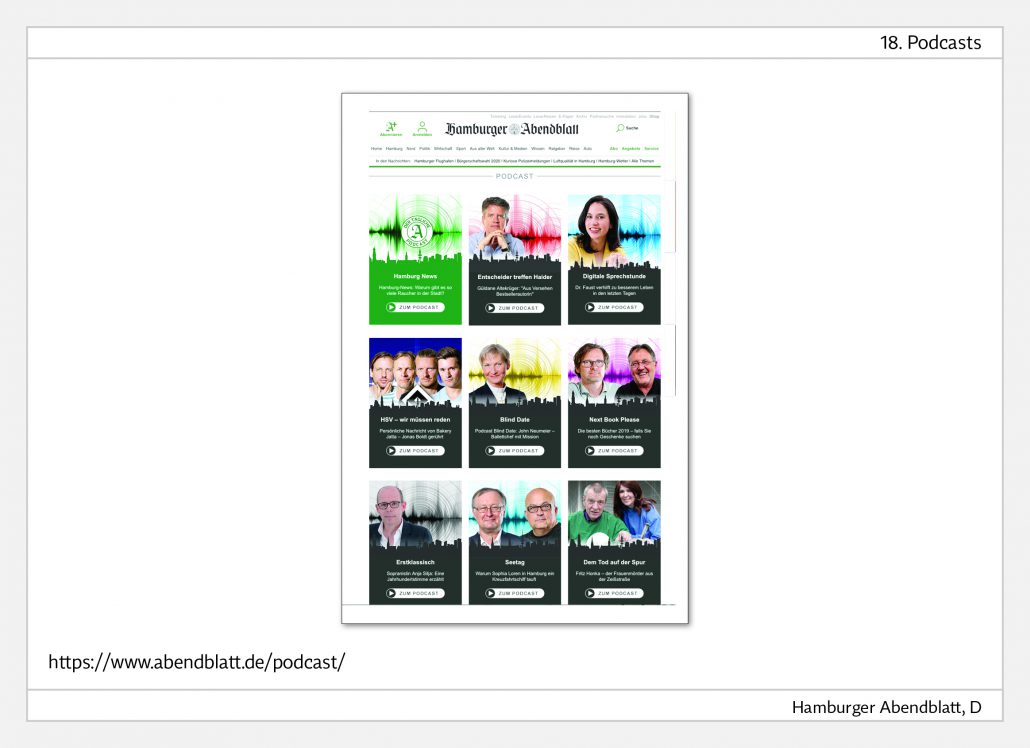
Between news and magazine
Prof. Blum: „It’s the mix that does it: from daily news podcasts to weekly magazine podcasts from culture, sport, business and much more, the Abendblatt has offers for many target groups.“
Prof. Dr. Zimper: „The Hamburger Abendblatt is experimenting with different formats: from the daily 15min Hamburg news to ‘Entscheider treffen Haider‘ – ‚decision makers meet Haider‘ (the latter is the chief editor of the paper). The news track could also run on Radio Hamburg.“
Go to the podcasts HERE.
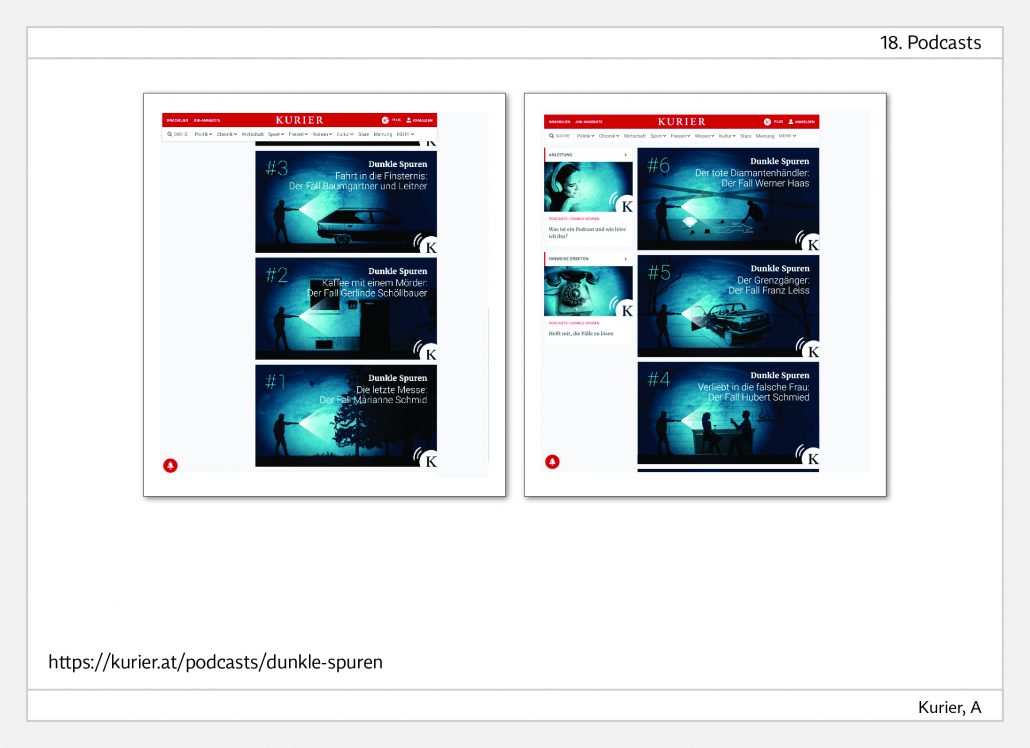
„Dark tracks“ podcast series
Prof. Blum: Professionally produced descriptions of unsolved criminal cases in Austria, which are very well recorded. Pure suspense, because perfectly staged for the ears: great infotainment.
Prof. Dr. Zimper: „The Viennese Kurier has discovered a narrow, even dark niche: unsolved criminal cases. Packaged and cut as if from the feature editorship of the culture channel ‚Österreich 1‘. Special praise for his handling of music and sounds.“
Go to the podcasts HERE.
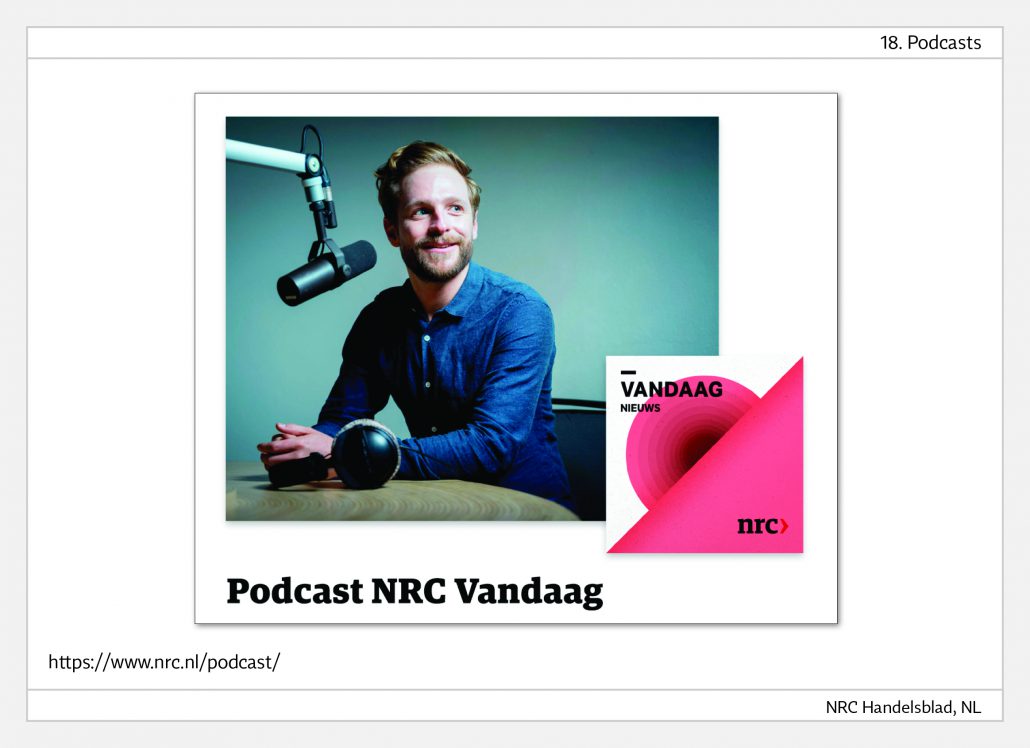
Vandaag
Prof. Blum: „Every weekday about 20 minutes on the topic of the day with editors and correspondents from NRC from all sections. Produced well and lively, with lots of information and classification: this is how podcasts work.“ This is the LINK.
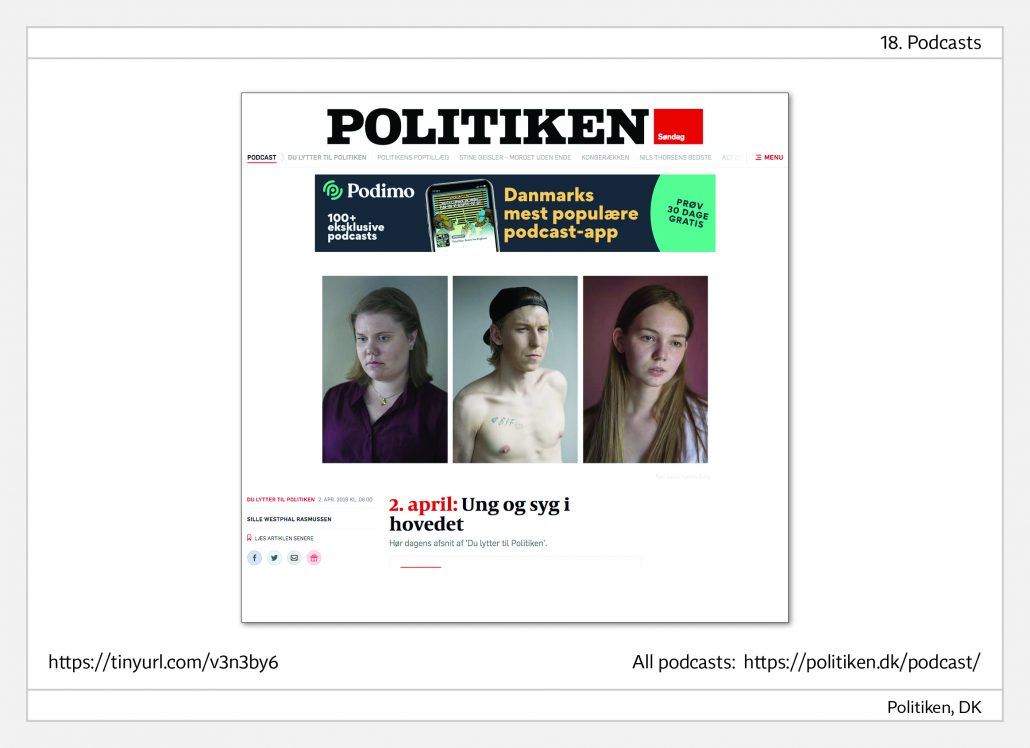
Podcasts on key topics
Politiken produces a daily news podcast. Within these podcasts there are main topics. To go to the start page of Politiken’s podcasts click HERE.
Example 1 from 2 April 2019: Young and sick in the head
In the last 10 to 15 years, the number of children and adolescents with psychiatric diagnoses has increased dramatically. Political photographer Louise Herrche Serup has travelled around Denmark to photograph 52 young people with such diagnoses. With the project ‚Ill in the head‘ she wants to remove a taboo. And in the podcast she tells how it feels to be a young person with a mental illness.
Prof. Dr. Zimper: In Politiken photographers and journalists talk about their work, their research and their encounters. Thus the format stays close to the newspaper itself and collects sympathy points in the matter of reader loyalty.
This is the LINK
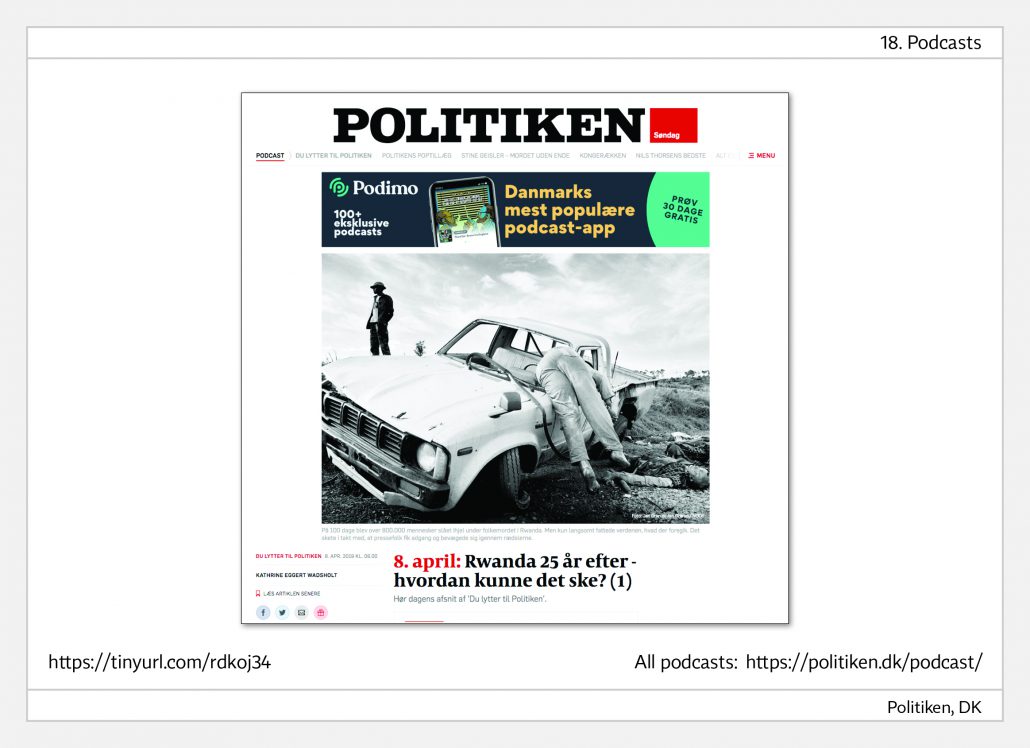
In the introduction it says: „Yesterday, exactly 25 years ago, the greatest and most repugnant genocide of our time was initiated in Rwanda. In 100 days more than 800,000 people were killed. Press photographer Jan Grarup moved through this landscape of horror. But what does genocide look like at close range? And why did this impress the experienced war photographer so much?“ It’s a very interesting approach to let the journalists or photographers talk about their projects. Besides texts and pictures, the podcast gives the story a further narrative level. LINK
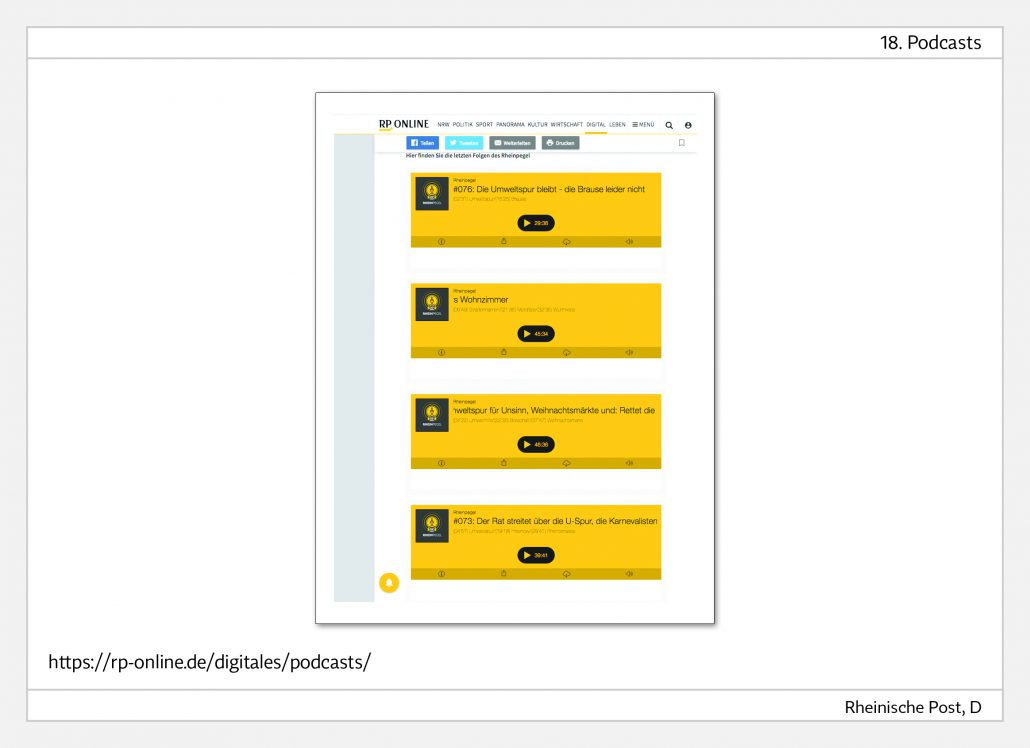
Podcast Rheinpegel – Rhine Gauge
Prof. Blum: „Dynamic, dialogue-oriented podcast by a female and a male editor of the Rheinische Post on local topics in Düsseldorf. Casual and spontaneous, informative and entertaining: good journalism to listen to.“ LINK to the podcasts.
Prof. Dr. Zimper: „In the podcast ‚Rheinpegel‘ – Rhine Level – the current water level of the Rhine is in fact communicated in the course of the format. Well mounted Düsseldorf format.“
